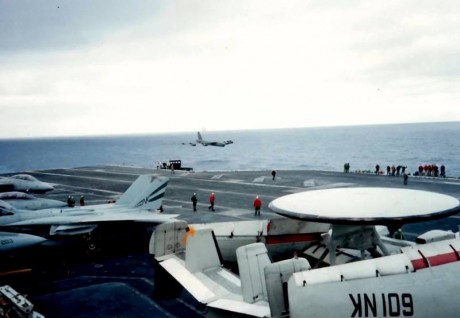Correct, although issues mentioned are specific to certain drones and absent with others. As I mentioned above, a lot of the capability was rushed into war. The same was with communication and overall bandwidth for comunication was dealt with with varying programs and much of this was a band-aid job to get the capability out to the tactical level. You had ISR drones fast-converted into UCAV's and sent in to essentially do CAS which is the toughest of all A2G work and then you constantly kept on inserting capability into them virtually on a monthly basis as and when required by the troops on the ground. This halfway away from CONUS and in a fairly rugged environment. Even the Global Hawk which is a much much more sophisticated and expensive drone was sent to war while it was still undergoing testing. This was the technology part of the article. At a tactical level the CONOPS were very very rudimentary and the entire procedure of conducting drone warfare was a "work-in-progress" as the operations continued over the years. Fast forward to now, you have a 10+ year of active experience, procedures and CONOPS in place and a multi-nation process with the UK, Netherlands, Italy, Australia and France among others coming in and buying the same drones for essentially the same mission. Collectively this should result in much better coordinated and refined efforts going forward. I would hazard a guess that a vast majority of these drone losses are the cheaper variety and many of the combat losses are while doing CAS or in some sort of hazardous/harsh environment.Drone failure reason would be some what similar , They are designed to be affordable and hence lack redundant systems like Aircraft do , If you loose communication link or have some kind of mechnical failure even though these could be of minor nature , getting them back would be challenge as there is no pilot in there that can try to save it by his skills and using backup systems.
Eventually all of this is worth it, as compared to having a 24x7 persistent Fast jet or strategic asset cover over every area (even low priority) is imposible technically and even if it were possible it would be extremely cost prohibitive. A 12-15 million reaper (or a 4-6 million predator) over the troops can send munition down range at a cost that is many times cheaper then a fast jet, and can do so with an endurance of 14 hours with a full load. The cost savings from the million mission hours flown in Afghanistan (predator+reaper) alone would be astronomical compared to having the same missions flown by manned fighters, bombers or rotary winged aircraft. Lets say a sensor laden F-16 costs around 15K to fly off from Afghanistan ( forward deployed) per hour. A million hours with it would cost aproximately 5x times more compared to the Reaper alone in direct costs. Add to that for every 14 hour (potential) TOS mission for the reaper one would most likely need 2-4 F-16's at a minimum with tanker support, airfield to actually sustain so many aircraft etc etc and the 20-30% loss rate of the fleet means very little even if we neglect the fact that the numbers are inflated due to the products being rushed into war.
Just try calculating the costs of maintaing those orbits with manned assetsAs the procurement of Predators and Reapers and the training of operators accelerated -- particularly under the tenure of former U.S. Defense Secretary Robert Gates, beginning in 2006 -- the number of UAV "orbits" skyrocketed (an orbit is a single, continuous presence requiring more than one UAV airframe per orbit). There are now more than 50 such orbits in the U.S. Central Command area of operations alone (counting several maintained by the larger, unarmed RQ-4 "Global Hawk"). The U.S. Air Force expects to be capable of maintaining 65 orbits globally by 2013, with the combined total of flight hours for Predator and Reaper operations reaching about 2 million around the same time. In 2005, UAVs made up about 5 percent of the military aircraft fleet. They have since grown to 30 percent, though most are small, hand-launched and unarmed tactical UAVs.







